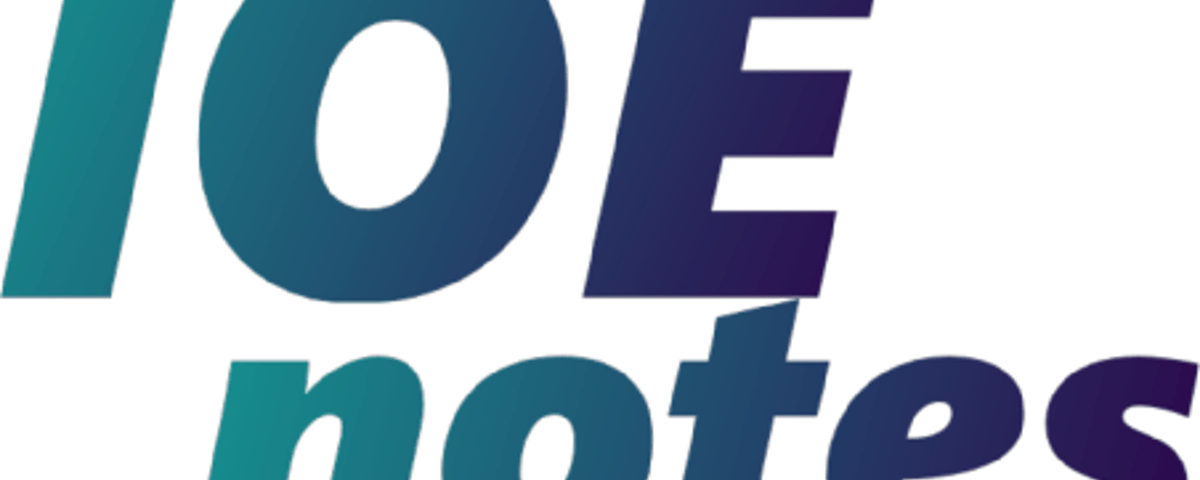- SH 402
- Theory : 4 Year: I
- Tutorial : 1 Part: I/II
- Practical : 2
Course objectives:
To provide the concept and knowledge of physics with the emphasis of present day application. The background of physics corresponding to Proficiency Certificate
- Oscillation: (7 hours)
- Mechanical Oscillation: Introduction
- Free oscillation
- Damped oscillation
- Forced mechanical oscillation
- EM Oscillation: Free, damped and Forced electromagnetic oscillation
- Wave motion (2 hours)
- Waves and particles,
- Progressive wave,
- Energy, power and intensity of progressive wave
- Acoustics (3 hours)
- Reverberation,
- Sabine’ Law
- Ultrasound and its applications
- Physical Optics (12 hours)
- Interference,
- Intensity in double slit interference,
- Interference in thin films,
- Newton’s rings,
- Hadinger fringes
- Diffraction,
- Fresnel and Fraunhoffer’s diffraction,
- Intensity due to a single slit,
- Diffraction grating,
- x-ray diffraction, x-ray for material test
- Polarization,
- Double refraction,
- Nichol prism, wave plates,
- Optical activity, specific rotation
- Interference,
- Geometrical Optics (3 hours)
- Lenses, combination of lenses,
- Cardinal points,
- Chromatic aberration
- Laser and Fiber Optics (4 hours)
- Laser production,
- He-Ne laser,
- Uses of laser
- Fiber Optics,
- Self focusing,
- Applications of optical fiber
- Laser production,
- Electrostatics (8 hours)
- Electric charge and force,
- Electric field and potential,
- Electrostatic potential energy,
- Capacitors, capacitor with dielectric,
- Charging and discharging of a capacitor
- Electromagnetism (11 hours)
- Direct current: Electric current,
- Ohm’s law, resistance and resistivity,
- Semiconductor and superconductor
- Magnetic fields:
- Magnetic force and Torque,
- Hall effect,
- Cyclotron, synchrotron,
- Biot-savart law,
- Ampere’s circuit law; magnetic fields straight conductors,
- Faraday’s laws, Induction and energy transformation, induced field,
- LR circuit, induced magnetic field,
- Displacement current
- Direct current: Electric current,
- Electromagnetic waves (5 hours)
- Maxwell’s equations,
- Wave equations, speed,
- E and B fields,
- Continuity equation,
- Energy transfer
- Photon and matter waves (5 hours)
- Quantization of energy
- Electrons and matter waves
- Schrodinger wave equation
- Probability distribution
- One dimensional potential well
- Uncertainty principle
- Barrier tunneling
Practical:
- To determine the acceleration due to gravity and radius of gyration of the bar about an axis passing through its center of gravity.
- To determine the value of modulus of elasticity of the materials given and moment of inertia of a circular disc using torsion pendulum.
- To determine the angle of prism and dispersive power of materials of the prism using spectrometer.
- To determine the wavelength of sodium light by Newton’s rings.
- To determine the wavelength of HeNe laser light and use it to measure the thickness of a thin wire by diffraction of light.
- To study the variation of angle of rotation of plane of polarization using concentration of the cane sugar solution
- To determine the specific rotation of the cane sugar solution using polarimeter.
- To determine the low resistance of a given wire by Carey Foster bridge and to determine the resistance per unit length of the wire of the bridge.
- To determine the capacitance of a given capacitor by charging and discharging through resistor.
- To plot a graph between current and frequency in an LRC series circuit and find the resonant frequency and quality factor.
- To determine dielectric constant of a given substance and study its variation with frequency by resonance method.
- To determine the susceptibility of a solution of given materials by Quinkes method.
- To study the electric field mapping.
References:
- Halliday, Resnick, Walker, “Fundamentals of Physics’, John Wiley & Sons. lnc.
- Sapkota, Pokharel, Bhaftarai, “Fundamentals of Engineering Physics”, Benchmark Publication.
- Brij Lal and Subrahmanyam, ‘A text book of Optics”, S. Chand Publisher.
- A. S. Basudeva, ‘Modern Engineering Physics”, S. Chand Publisher.
- R. K. Caur and S. L. Gupta, “Engineering Physics’, Dhanpat Publisher.
- Brij Lal and Subrahmanyam, ‘Waves and Oscillation”, S. Chand publisher.
Evaluation Scheme:
Chapter Hours Mark distribution*
Mechanical and electromagnetic
oscillation 7 10
Wave motion and Acoustics 5 5
Physical Optics 12 15
Geometrical Optics 3 5
Laser and Fiber Optics 4 5
Electrostatics and Electromagnetism 19 30
Electromagnetic Waves 5 5
Photon and Matter Waves 5 5
Total 60 80
* There may be minor deviation in mark distribution.


